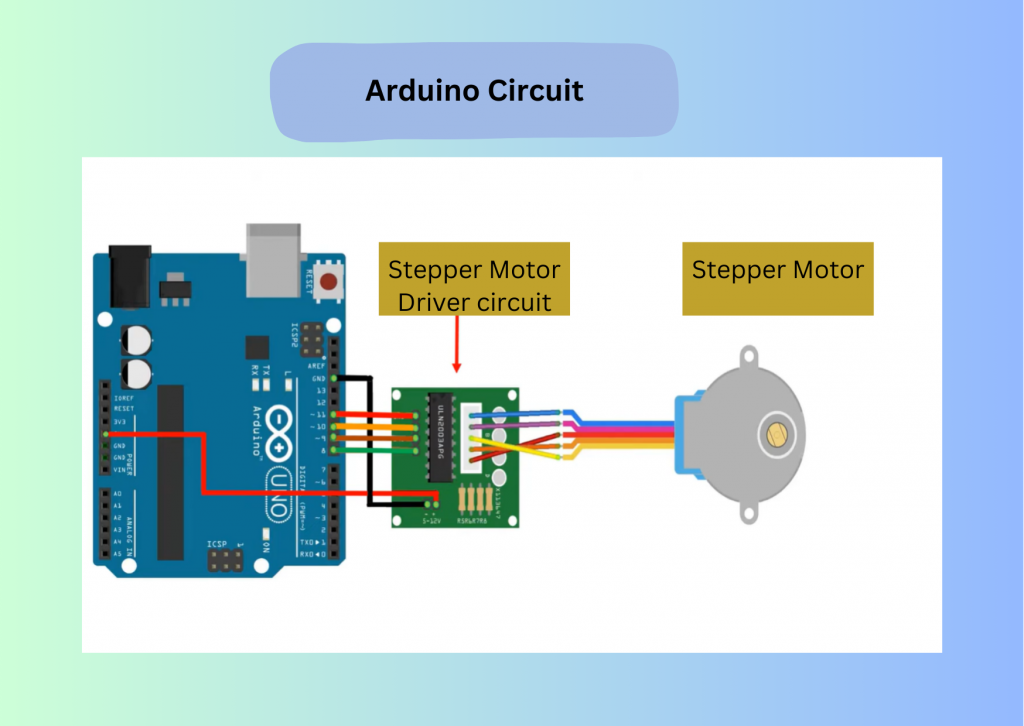Finding moments of tranquility can be challenging in a world dominated by screens and technology. But what if technology itself could be a source of serenity? Aayush, a curious and innovative student at SkoolOfCode, has done just that. With a keen interest in exploring new things and a proactive approach to learning, Aayush has created a mesmerizing circular pattern for Zen gardens using Arduino, a stepper motor, and 3D-printed parts. This captivating project, developed for a Japanese school, exemplifies the incredible potential of coding for kids and the unique educational opportunities offered by SkoolOfCode’s online coding classes.
The Timeless Beauty of Zen Gardens
Zen gardens, known as karesansui or Japanese rock gardens, are an ancient art form designed to inspire meditation and inner peace. These gardens feature carefully arranged rocks, sand, and gravel, with raked patterns symbolizing ripples in water. The act of raking these patterns is not just about aesthetics; it’s a meditative practice that encourages mindfulness and tranquility.
Imagine combining this ancient art form with modern technology. That’s exactly what Aayush has done. His project seamlessly blends the meditative qualities of Zen gardens with the precision and creativity of robotics for kids, creating a harmonious intersection of tradition and innovation.
Aayush’s Journey: From Concept to Creation
Aayush’s journey began with a simple yet ambitious idea: to automate the creation of Zen garden patterns. Leveraging the skills he developed at SkoolOfCode, Aayush designed a system using Arduino, an open-source electronics platform, to control the movements necessary for crafting these intricate patterns. The project’s core components included an Arduino board, a stepper motor, and 3D-printed parts.
Arduino for Kids: Empowering Young Innovators
Arduino is an ideal platform for young learners. It’s user-friendly and versatile, making it perfect for educational projects. Aayush programmed the Arduino to control the stepper motor’s movements, ensuring the precise sequences needed to create the beautiful, flowing lines characteristic of Zen garden patterns.
Stepper Motor: Precision in Motion
The stepper motor was crucial for achieving the exact control required. Unlike regular motors, stepper motors move in discrete steps, allowing for precise positioning. This precision was essential for the smooth, intricate patterns Aayush aimed to create.
Arduino Circuit and Code
To help others recreate this innovative project, here’s a detailed description of the Arduino circuit and the code Aayush used.
Circuit Diagram
- Arduino Board: The central component of the circuit.
- Stepper Motor Driver : Connects the Arduino to the stepper motor.
- Stepper Motor: Controls the raking mechanism.
- Power Supply: Powers the stepper motor and Arduino.
- Breadboard and Wires: For connecting components.
Here’s a basic outline of the connections:
- Arduino to Stepper Motor Driver:
- 5V to VCC
- GND to GND
- Stepper Motor Driver to Stepper Motor:
- Connect the motor coils to the driver’s output terminals.
- Power Supply:
- Connect 9v Battery with Arduino through barrel jack connector
Arduino Code
Below is the Arduino code Aayush used to control the stepper motor and create the circular patterns:
#include <Stepper.h>
int Stepperrevolution=200;
int Speed=60;
Stepper mystepper(Stepperrevolution,4,5,6,7);
void setup() {
mystepper.setSpeed(Speed);
Serial.begin(9600);
}
void loop() {
mystepper.step(Stepperrevolution);
}

3D-Printed Parts: Custom Components for a Unique Design
To bring his vision to life, Aayush used 3D printing to create custom parts for the raking mechanism. 3D printing is a fantastic tool for young inventors, enabling them to design and produce components tailored to their specific needs. Combining these technologies allowed Aayush to build a system capable of replicating the meditative art of Zen gardening with modern precision.
The Learning Experience: Building Skills and Confidence
Aayush’s project is a testament to the power of coding for kids and the comprehensive education provided by SkoolOfCode’s online coding classes. Through this project, Aayush honed his technical skills and developed critical problem-solving and innovative thinking abilities.
Coding Skills: The Language of the Future
Aayush learned to write code for the Arduino, mastering loops, conditionals, and functions. These fundamental programming concepts are essential for anyone looking to explore the world of technology and robotics for kids.
Engineering Principles: Bridging the Gap Between Ideas and Reality
The project required an understanding of basic engineering principles. Aayush had to consider the mechanics of the stepper motor, the design of the 3D-printed parts, and how these elements would work together to create the desired patterns.
Creativity and Innovation: Turning Ideas into Reality
Above all, Aayush’s project encouraged creativity and innovation. He wasn’t just following instructions; he was inventing a solution to a unique problem. This kind of creative thinking is invaluable and is a key focus of SkoolOfCode’s approach to teaching robotics and coding for kids.
Impact and Inspiration: A Project that Resonates
The impact of Aayush’s project extends beyond his personal achievement. For the Japanese school, it introduced a modern, interactive element to their traditional Zen garden, delighting students and teachers alike. Aayush’s work serves as an inspiration to his peers, demonstrating that with the right guidance and resources, young people can achieve remarkable things.
SkoolOfCode: Fostering Future Innovators
SkoolOfCode is dedicated to providing high-quality coding education for children aged 6-16 years. Our holistic STEM-based curriculum covers everything from introductory coding to advanced courses in Python and Java, preparing students like Aayush for future success in computer science.
Expert Teachers: Guiding Young Minds
Our instructors are not only knowledgeable but also passionate about teaching. They understand how to engage young minds and make learning fun and accessible.
Hands-On Learning: Practical Skills for Real-World Applications
We believe in learning by doing. Our classes are interactive, with plenty of opportunities for students to work on real projects, just like Aayush’s Zen garden pattern project.
Holistic Curriculum: A Comprehensive Approach to STEM Education
Our curriculum goes beyond coding. We incorporate elements of robotics, electronics, and engineering, providing a well-rounded education that equips students with a wide range of skills.
Supportive Community: Encouraging Collaboration and Growth
At SkoolOfCode, students are part of a community of like-minded peers. This sense of belonging fosters collaboration, inspiration, and mutual support.
Conclusion: The Fusion of Calm and Creativity
Aayush’s Zen garden pattern project is a perfect example of what can be achieved through SkoolOfCode’s online coding classes for kids. It’s a blend of tradition and technology, creativity and precision, tranquility and innovation. This project showcases the incredible potential of coding for kids and serves as a reminder of the importance of nurturing young talent.
As we continue to support and inspire the next generation of innovators, we look forward to many more projects like this one—projects that not only push the boundaries of what’s possible but also bring a little bit of calm and beauty into the world.
By –Dr. Kadam Bhambari, an Educator at SkoolofCode with Ph.D. and MTech in Electronics. She is an expert in micro:bit, Arduino, and Artificial intelligence.

